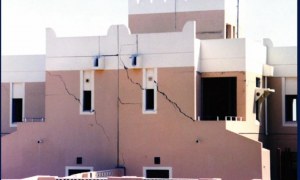🕑 Reading time: 1 minute
Sand bath method is a field method conducted to determine the water content of the soil. This method is fast but the result is not as accurate as the oven-dry method.
Also Read: Determination of water content by oven dry and pycnometer method
The procedure and calculation employed in the sand bath method to determine the water content of the soil are explained below.
Contents:
Material Required for Sand Bath Method
The materials required are:
- Sand Bath: This is a tray or a dish which is made of strong metal. The tray is a heatproof dish that contains clean sand to a depth of 25mm.
- Containers or Tray: Moisture Content Containers are required for fine-grained soils. If the soil is coarser, heat-resistant trays of depth 50 to 70mm and 200 to 250 mm square are employed. The range is fixed depending on the size and the quantity of the coarser material chosen.
- Heating Equipment: Any heating equipment like paraffin pressure stove or electric hot plain or a bottled gas burner.
- Spatula, scoop and small tools.
Procedure for Sand Bath Method
The sand method performs the following procedure:
- The soil sample is crumbled and is placed loosely over a tray. The weight of the sample plus the tray is determined and recorded as m2. The weight of the tray alone is recorded as m1.
- The sand bath is placed over some form of heating equipment. The soil sample with the tray is placed over the sand contained in the sand bath. Special care must be taken to avoid heating up of the tray.
- The sample is stirred continuously in order to avoid burning of the soil. To get an indication of over-heating, crumbles of paper can be added to the soil sample.
- The sample can be checked whether it is completely dry by removing it from the heat and weighing the mass. After which, the sample is again heated for 15 minutes and weighed. If both the mass remains same (A variation of 0.1g for fine grained soil, 0.5g for medium grained soil and 5g for coarse grained soil is acceptable), it indicates that the soil is completely dry.
- After drying, the sample is allowed to cool and the weight of the dry soil is taken as m3.
- The procedure is repeated for 3 trials and the average value is taken.
Observation and Calculation
| Sl. No | Observation | Trial 1 | Trial 2 | Trial 3 |
| 1 | Container No/Tray No | |||
| 2 | Mass of wet soil + container(m2) (grams) | |||
| 3 | Mass of container (m1) | |||
| 4 | Mass of dry soil+ container (m3) | |||
| 5 | Mass of dry soil (Ms)= m3-m1 | |||
| 6 | Mass of moisture (Mw) = m2-m3 | |||
| 7 | Water Content(%) w= (Mw/Ms) x 100 (%) | w1 | w2 | w3 |
| Average water content(%) wav= (w1 + w2 + w3)/3 |
The water content is obtained by the formula:
w =[ (Mass of moisture) / (Mass of dry soil) ] x 100 = Mw/Ms
Result
The average water content of the soil sample is = --- %
Sand bath method employs high temperature that can affect the crystalline structure of the soil. Hence, it is not recommended for organic soils and soils with high gypsum content.
Also Read: Determination of water content by Torsion balance Method


